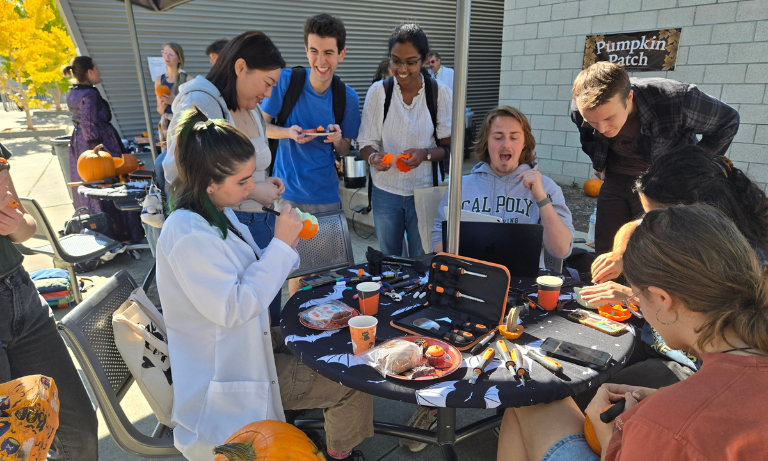Keysight Engineers were hosted by Cal Poly Engineering Students and Faculty on June 15th, for a full day of lab demonstrations and discussions regarding a new Cal Poly research project focused on investigating novel uses of laser interferometer systems.
A laser interferometer is a sensor that is capable of measuring the position of objects with extreme accuracy, down to the picometer and it is used in several industries including silicon wafer manufacturing. Keysight donated a three-axis laser interferometer measurement system capable of nanometer position resolution worth approximately $55,000 and direct funding for the 18-month research project.
Cal Poly students and faculty from the Mechanical and Electrical Engineering departments are developing new tools to enable users without expertise in motion control to leverage these types of systems for their applications. The group is developing tools for new system identification and motion control applications using the laser system. Additionally, the group is building a new flexible and scalable interface that would allow the system to be used in a variety of emerging applications.
On Tuesday, June 15th, John Flowers and Riley Barrett from Keysight met with Dr. Siyuan Xing, Dr. Charles Birdsong, Jordan Kochavi, and Grant Gallagher from Mechanical Engineering and Dr. Joseph Callenes, Aria Pegah, and Tan Run En from Electrical Engineering. The Cal Poly team demonstrated their initial lab setup in Building 13, including a new learning platform for testing the optical system and an electrical subsystem for emulating the behavior of the optical system. The Cal Poly and Keysight teams were able to have valuable hands-on lab time together and debugged a variety of bugs throughout the day. John Flowers provided in-depth explanations for the inner workings of the laser interferometer system and background for their potential applications. Students and faculty learned important concepts and details regarding interferometer systems and obtained a great foundation to understand their real-world applications. After the Cal Poly team provided a demonstration of potential Matlab/Simulink tools to be used in the project, the entire group planned for their next steps over the Summer.


